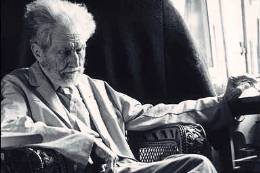11 July 1998
Sleep/Wake Cycle Gene Discovered
 The fruit fly Drosophilia has done it again. First it hit the headlines when scientists blessed it with a miraculous anti-ageing gene. Then it found fame by getting hopelessly drunk. And now the little insect has helped researchers identify a new gene that controls the sleep/wake cycle.
The fruit fly Drosophilia has done it again. First it hit the headlines when scientists blessed it with a miraculous anti-ageing gene. Then it found fame by getting hopelessly drunk. And now the little insect has helped researchers identify a new gene that controls the sleep/wake cycle.
As scientists from The Rockerfeller University report in two papers featured in the July 10 issue of Cell, the gene they call "double-time" regulates the molecular cycles underlying circadian rhythms. In humans, circadian rhythms affect functions as diverse as the sleep/wake cycle, body temperature, mental alertness, pain sensitivity and hormone production. Previous studies have shown that the genes and proteins governing the rhythms in Drosophilia play a similar role in humans.
In the fly, the circadian rhythm requires the pairing of two proteins, PER and TIM, made by the period (per) and timeless (tim) genes, respectively. All cells of the fly have per and tim genes, but the brain cells set the body clock. PER and TIM proteins accumulate in the nuclei of light-sensitive eye cells, called photoreceptors, as well as pacemaker cells of the central brain.
The pace of the clock is set by a time lag: while the per and tim genes are freed early in the day to make RNA - molecules essential to create the PER and TIM proteins - it is not until night that the protein pairs actually form and accumulate. Near dawn, they then begin to disintegrate, and with the proteins depleted, the per and tim genes begin to make RNA again by midday. The double-time gene regulates this process.
"In other words, the double-time gene regulates the build-up of PER in the cell," explains Michael Young, professor and head of the Laboratory of Genetics at Rockerfeller. "This determines the time it takes to complete the cycle, or whether there is any cycle at all."
GoGo further: Pigment powered body clocks
